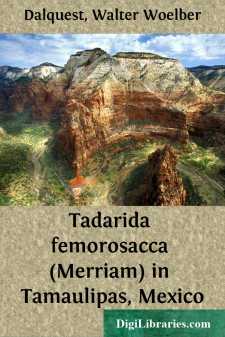Categories
- Antiques & Collectibles 13
- Architecture 36
- Art 48
- Bibles 22
- Biography & Autobiography 813
- Body, Mind & Spirit 142
- Business & Economics 28
- Children's Books 17
- Children's Fiction 14
- Computers 4
- Cooking 94
- Crafts & Hobbies 4
- Drama 346
- Education 46
- Family & Relationships 57
- Fiction 11829
- Games 19
- Gardening 17
- Health & Fitness 34
- History 1377
- House & Home 1
- Humor 147
- Juvenile Fiction 1873
- Juvenile Nonfiction 202
- Language Arts & Disciplines 88
- Law 16
- Literary Collections 686
- Literary Criticism 179
- Mathematics 13
- Medical 41
- Music 40
- Nature 179
- Non-Classifiable 1768
- Performing Arts 7
- Periodicals 1453
- Philosophy 64
- Photography 2
- Poetry 896
- Political Science 203
- Psychology 42
- Reference 154
- Religion 513
- Science 126
- Self-Help 84
- Social Science 81
- Sports & Recreation 34
- Study Aids 3
- Technology & Engineering 59
- Transportation 23
- Travel 463
- True Crime 29
Geographic Range of the Hooded Skunk, Mephitis macroura With Description of a New Subspecies from Mexico
Description:
Excerpt
The hooded skunk, Mephitis macroura Lichtenstein, can be distinguished from the only other species in the genus, Mephitis mephitis Schreber, by the larger tympanic bullae, in the white-backed color phase by having some black hairs mixed with the white hairs of the back, and in the black-backed phase by having the two white stripes widely separated and on the sides of the animal instead of narrowly separated and on the back of the animal. The starting point for taxonomic work with Mephitis is A. H. Howell's "Revision of the skunks of the genus Chincha (N. Amer. Fauna, 20, 1901)." Of the species Mephitis macroura, Howell (op. cit.) recognized three subspecies: M. m. macroura, M. m. milleri, and M. m. vittata.
The species M. macroura is restricted to the arid region made up mostly of the Mexican Plateau. Also, wherever the species occurs beyond this Plateau, as for example in Guatemala, at San Mateo del Mar in Oaxaca, in the vicinity of Piedras Negras in Veracruz, and in southern Arizona, aridity is marked. Whether the species has a continuous distribution from the southern end of the Mexican tableland southward to Dueñas in Guatemala is not known but it is unlikely that the lowland population at San Mateo del Mar on the Pacific slope of Oaxaca has contact with M. m. macroura of the Mexican Plateau and it is almost certain that the population, which is here named M. m. eximius, from the arid coastal plain of eastern Mexico in Veracruz, has no connection with the upland population, M. m. macroura. The lowest elevation on the eastern slope of the Plateau from which we have record of the occurrence of this species is 4,500 feet at Jico. All along the eastern slope of the Plateau, between the elevations of approximately 2,000 and 4,500 feet, the belt of lush, dense vegetation of the upper humid division of the Tropical Life-zone constitutes a barrier to Mephitis and tends to exclude the hooded skunk from the arid territory below the humid belt. Another kind of skunk, Conepatus tropicalis, lives in the humid belt, at least on the eastern side of the Mexican tableland. How the population of Mephitis, which was sampled by us from west and west-northwest of Piedras Negras, arrived there is unknown but we think that its geographic range is not now connected with that of the population on the Plateau. The same can be said of the lowland population at San Mateo del Mar in Oaxaca. There, on the Pacific slope of the Mexican tableland, the lower humid division of the Tropical Life-zone probably has tended to restrict the spread southward and westward of Mephitis; however, on this Pacific slope the humid belt is less humid and it is less continuous, we think, than on the Atlantic slope.
Four subspecies of Mephitis macroura may be recognized. They are as follows:
Mephitis macroura milleri Mearns
1897. Mephitis milleri Mearns, Proc. U. S. Nat. Mus., 20:467, 1897.
1901. Mephitis macroura milleri, Bull. Amer. Mus. Nat. Hist., 14:334, November 12, 1901.
Type locality.—Fort Lowell, Pima County, Arizona.
Range.—Northwestern Mexico and southeastern Arizona. See figure 1. Marginal occurrences (unless otherwise indicated, after Howell, N. Amer. Fauna, 20:42, 43, 1901) are: Arizona: Santa Catalina Mountains; Tucson; Fort Lowell. Chihuahua: Casas Grandes; Chihuahua (City). Coahuila: La Ventura. Chihuahua: Guadalupe y Calvo (mountains near). Sonora: Camoa; Hermosillo; Sierra Cubabi (Burt, Miscl. Publ., Mus. Zool., Univ. Michigan, 39:30, 1938).
Characters.—Long skull (ââ¢â 60 mm, ââ¢â¬ 56 mm) and large m1.
Mephitis macroura macroura Lichtenstein
1832. Mephitis macroura Lichtenstein, Darstellung Säugethier, pl. 46, with accompanying text, 1832.
Type locality.—Mountains northwest of the City of Mexico....






